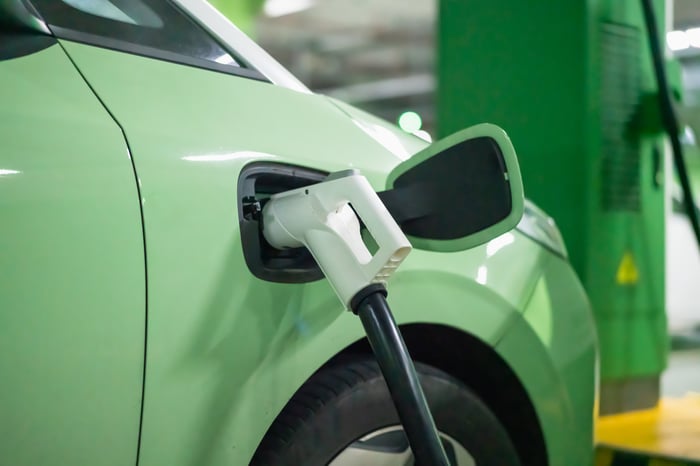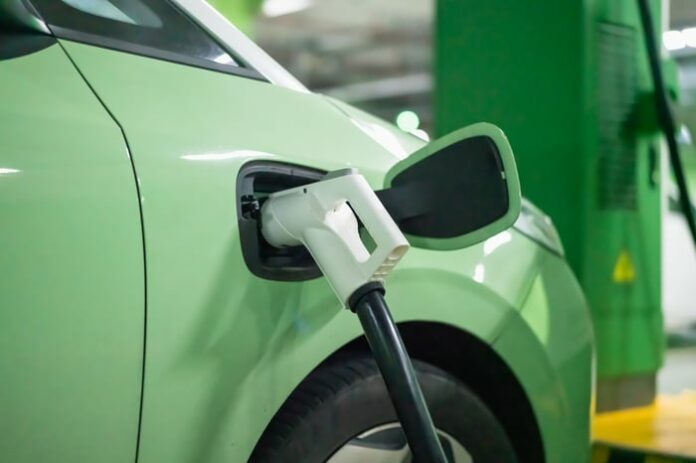Since debuting on the public market in 2021, Rivian Automotive (NASDAQ: RIVN) has successfully sold its electric vehicle (EV) SUVs. However, the company continues to struggle with profitability, as indicated by its negative gross margin.
Despite recent component shortages impacting deliveries, Rivian remains optimistic about achieving a modestly positive gross margin next quarter. This turnaround is attributed to the re-engineering of its vehicles and upgrades to its manufacturing facility.
Rivian’s stock has faced significant volatility in 2024, currently down more than 55%. Given these circumstances, it’s worthwhile to examine the company’s latest quarterly results to see if it could be a good time to invest.
Production Setbacks and Future Outlook on Gross Margin
In the third quarter, Rivian’s revenue fell by 35% year over year, totaling $874 million. The company delivered 10,018 vehicles, down from 15,564 a year earlier. Vehicle production also decreased, with 13,157 units manufactured in the quarter.
In response to production challenges, Rivian adjusted its full-year production forecast from 57,000 to a new range of 47,000 to 49,000 vehicles. Consequently, the expected loss before interest, taxes, depreciation, and amortization (EBITDA) was updated to between $2.825 billion and $2.875 billion.
Rivian continued to experience negative gross margins, reporting a gross profit loss of $392 million—essentially losing over $39,000 for each vehicle sold before accounting for selling or operational costs.
Nonetheless, the company emphasized that it anticipates positive gross margins next quarter, thanks to increased revenue per vehicle and decreased variable material costs. Notably, Rivian projects a 20% reduction in material costs since the beginning of the year, alongside improvements in manufacturing efficiency. Next year, the introduction of a new quad motor vehicle is expected to elevate average selling prices (ASPs).
For the quarter, Rivian recorded an operating loss of $1.17 billion and negative adjusted EBITDA of $1 billion. The cash usage remains substantial, with operating cash outflows of $876 million and free cash flow of negative $1.15 billion after $277 million in capital expenditures (capex). At the quarter’s end, it held $9.4 billion in cash and short-term investments, juxtaposed with $4.4 billion in debt.

Image source: Getty Images.
Is This the Right Time to Invest in Rivian?
While achieving a positive gross margin is crucial for Rivian’s long-term viability, it’s encouraging that the ongoing component shortages will not derail this goal. The company recently secured a significant cash injection of up to $5 billion from a multi-year partnership with Volkswagen. This joint venture is expected to finalize by year-end, further bolstering Rivian’s financial position.
This influx of capital will enable Rivian to focus on developing its more affordable R2 model, projected to start at $45,000, thus expanding its potential customer base. To progress towards sustainability, the company must generate consistent revenue while working towards profitability—an ambitious yet essential task ahead.
Additionally, Rivian maintains a strong position through partnerships with established names like Volkswagen and Amazon, which is its largest shareholder and a significant customer for Rivian’s EV delivery vans. As Amazon ramps up its van order requests, Rivian foresees the possibility of more commercial agreements next year.
Although Rivian is still navigating early-stage challenges and cash consumption, it appears to be making strides in addressing key issues, such as negative gross margins. Its collaboration with Volkswagen underscores Rivian’s innovative EV technology, particularly with its new zonal hardware design.
Overall, Rivian may present a speculative investment opportunity, yet those willing to accept risk could consider establishing a small position due to its potential strengths.
Seize This Potentially Profitable Opportunity
Have you ever felt like you missed out on investing in promising stocks? If so, here’s your chance.
Rarely, our team of analysts identifies a “Double Down” stock they believe is positioned to surge in value. If you think you’ve missed your opportunity to invest, consider this your moment before it slips away. The data is compelling:
- Amazon: an investment of $1,000 when we doubled down in 2010 is worth $23,295 now!*
- Apple: $1,000 invested during our 2008 recommendation would be $42,465 today!*
- Netflix: $1,000 from 2004 has ballooned to $434,367!*
We currently have “Double Down” alerts for three outstanding companies, and this might be your only shot in the near future.
Discover 3 “Double Down” stocks »
*Stock Advisor returns as of November 11, 2024
John Mackey, former CEO of Whole Foods Market, an Amazon subsidiary, is a member of The Motley Fool’s board of directors. Geoffrey Seiler holds no position in the stocks mentioned. The Motley Fool has positions in and recommends Amazon. The Motley Fool recommends Volkswagen AG and has a disclosure policy.
The views and opinions expressed herein are those of the author and do not necessarily reflect the views of Nasdaq, Inc.

